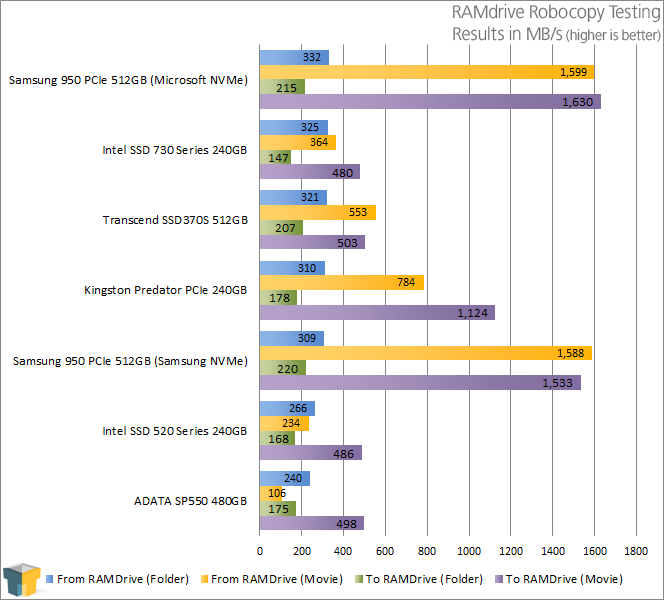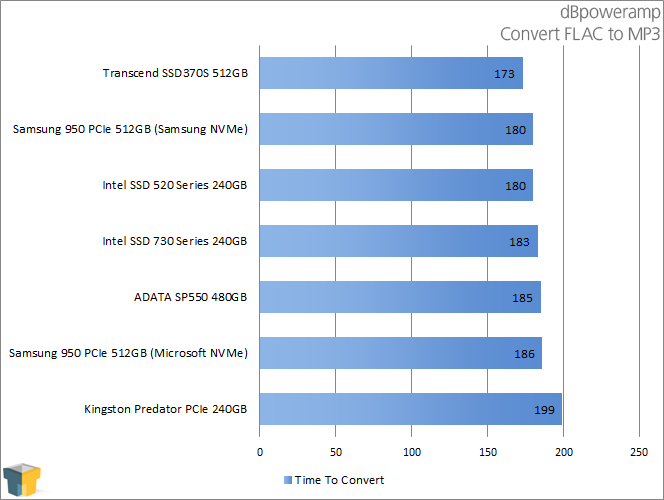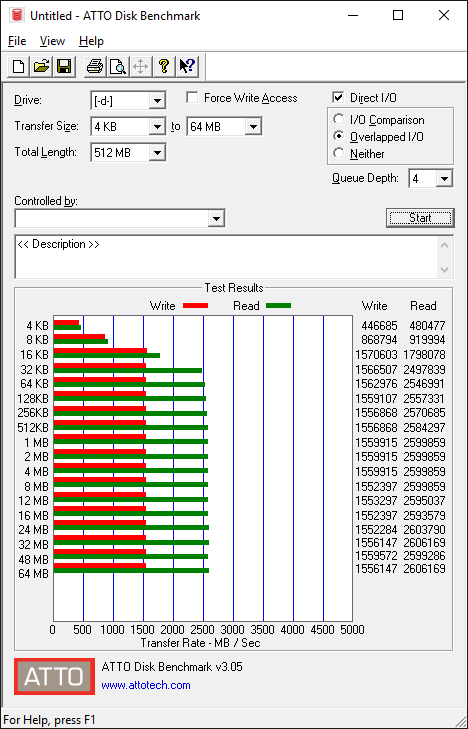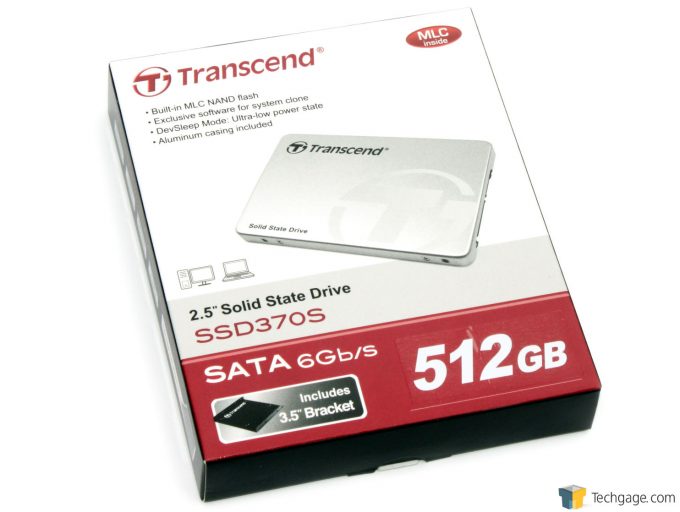- Qualcomm Launches Snapdragon 4 Gen 2 Mobile Platform
- AMD Launches Ryzen PRO 7000 Series Mobile & Desktop Platform
- Intel Launches Sleek Single-Slot Arc Pro A60 Workstation Graphics Card
- NVIDIA Announces Latest Ada Lovelace Additions: GeForce RTX 4060 Ti & RTX 4060
- Maxon Redshift With AMD Radeon GPU Rendering Support Now Available
Transcend SSD370S MLC SSD Review

Got that new laptop or desktop and want to start the new year off right with a solid-state drive upgrade? Need an SSD that will theoretically outlive every system you will ever own for the duration of your lifetime? If that’s the case then you’ve come to the right place as Transcend has the drive for you.
Page 3 – ATTO, Robocopy, dBpoweramp & Final Thoughts
ATTO
Transcend’s drive delivers fairly solid performance at all levels. Compared to the similar controller in the ADATA drive the SSD370S does offer stronger 4KB read and write performance, worth noting as the majority of file operations still tend to be 4KB in nature.
RAMDrive Robocopy

Robocopy gives us some valuable real-world usage over synthetic tests, and immediately we can see why this is important. One key thing to note about the synthetic benchmarks in general is that they use very small file sizes, while our movie is nearly 10GB and our 1.6GB test folder includes almost 12,000 files and subfolders.
It therefore wasn’t any surprise that the Transcend drive bests the SP550 in all four transfer tests. In fact the SSD370S manages to come out on top of all our SATA drives and trade blows with the M.2 drive again. The Predator has higher sequential performance thanks to its higher bandwidth M.2 interface but the Transcend drive is still able to hold its own in the folder read and write tests.
dBpoweramp

In this test we are CPU bound with a quad-core 8-thread processor, but oddly our Transcend drive seems to still be quicker than all other drives here. We of course restarted the system and verified the settings yet on the second run the Transcend did one better by shaving another second off its time at 172.
Final Thoughts
Transcend has an interesting drive in the SSD370S. Though it has been on the market for two years, it means it is using older, higher endurance NAND. These offer endurance ratings not even the newest 3D MLC NAND can quite hope to match. Transcend has also put more effort than usual into an easy-to-follow installation guide and easy to find and use SSD cloning clearly aimed for the consumer that knows nothing about computers. It is easy to forget but enthusiasts will likely know how or at least know where to find help for migrating an old system to a new SSD but the average consumer will not, and there certainly is no need for them to pay extra for a shop to do it.
Performance-wise the SSD370S delivers strong, consistent performance through the use of solid MLC flash. There are no SLC cache buffers or negative performance from TLC NAND to deal with so overall performance will remain consistent allowing the drive to max out the SATA interface under many read operations.
Unfortunately no SSD is perfect, else there wouldn’t be any question as to which drive to buy! The SSD370S’s single biggest drawback is its street price. At $165 direct from Transcend (via Amazon) the 512GB model is 32 cents per gigabyte which gives it a small price premium over many competing drives. In fact, the price history of the SSD370S indicates the drive spent several months below $150 originally before going back up. Many retailers are even selling the drive closer to $185, which was the price of the drive two years ago! To be clear the SSD370S isn’t a budget drive as it uses performance MLC flash, but even so at $165 it commends a moderate premium over models around the 28 cents-per-gigabyte price point.
Now is that price premium justified? That’s going to depend a lot on the use case for the drive(s) and for consumers personal preference regarding drive endurance. As we indicated at the start of the review the endurance rating on this drive is extremely high; the 1TB model is rated for a whopping 1160TB! The latest-greatest like the 1TB 960 EVO is only rated for 400TB despite its significantly higher cost, while the 960GB 3D TLC SP550 drive is rated for less at 360TB. This effectively gives the Transcend drive an estimated three times the endurance of TLC budget SSDs and even the EVO’s. This is partly feasible due to the older process NAND Transcend utilizes, regardless of whether it is Micron or SanDisk it is still 2D MLC type flash on a mature ~15nm process node.
Is this level of endurance worth it? Again that depends entirely on what you need the drive for. It is beyond overkill for a typical consumer, but any sort of serious server or workstation use, content creation, or a scratch disk would have need for such high endurance. To put it in perspective, assuming 20GB of writes a day it would take 159 years just to reach the 1TB drive’s endurance rating. A typical consumer writes less than 5GB to an SSD a day, so you get the picture! Undoubtedly 159 years from now the SSD will not be compatible with any computers built in that time frame.
Quixotically, despite the extraordinary endurance rating the drives only feature a three-year warranty while those very same drives in previous example can fetch up to five. Even so Transcend stands by its endurance ratings up to those three years (amounting to over 1TB in writes per day), so interested buyers looking for a cheap server drive or serious content creation applications that need such insane endurance need look no further than the Transcend SSD370S.
If there is one universal constant it is change, or rather the change in prices. The Transcend SSD370S is a solid performing drive with an impressive endurance produced by a mature company that knows a thing or two about flash memory. At $165 for the 512GB model it commends a $20 premium above similar drives. But for anyone that wants the highest endurance ratings available without having to pay the premium for server-class or flagship enthusiast drives it may just be a bargain.
Support our efforts! With ad revenue at an all-time low for written websites, we're relying more than ever on reader support to help us continue putting so much effort into this type of content. You can support us by becoming a Patron, or by using our Amazon shopping affiliate links listed through our articles. Thanks for your support!



















